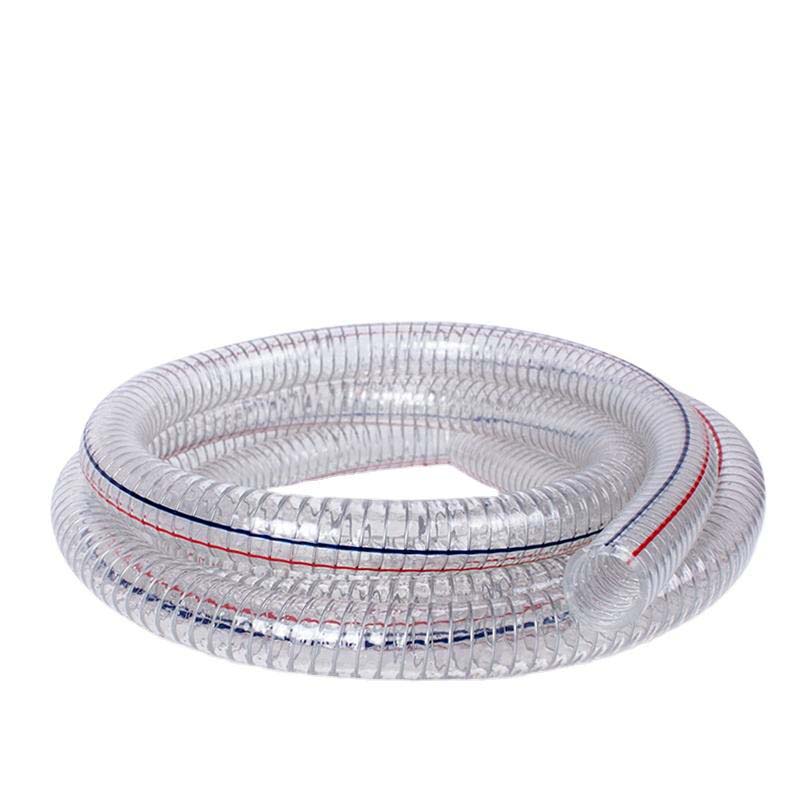polyurethane hose vs rubber
Polyurethane Hose vs. Rubber Hose A Comprehensive Comparison
When it comes to choosing the right hose for various applications, the material of construction plays a critical role in determining performance, durability, and suitability. Polyurethane and rubber hoses are two popular options, each with distinct properties and advantages. In this article, we will explore the key differences between polyurethane hoses and rubber hoses to help you make a more informed decision for your specific needs.
Composition and Properties
Polyurethane Hose Polyurethane (PU) hoses are made from a synthetic material known for its incredible flexibility and resilience. Polyurethane is processed into a flexible tube through extrusion or other manufacturing techniques. This kind of hose is renowned for its lightweight nature, high tensile strength, and resistance to abrasion. Polyurethane can endure a wide range of temperatures, making it suitable for various environments and applications. Additionally, it is resistant to oil, grease, acids, and other chemicals, increasing its versatility.
Rubber Hose Rubber hoses, on the other hand, are made from natural or synthetic rubber materials, which also exhibit excellent flexibility and strength. Rubber has been used for hose manufacturing for decades, and its insulating properties and elasticity make it a reliable option. However, rubber hoses generally have limitations regarding chemical resistance compared to polyurethane. Depending on the type of rubber used—such as neoprene, EPDM, or silicone—the performance can vary significantly in terms of temperature tolerance and resistance to external elements.
Durability and Lifespan
One of the critical factors in hose selection is durability. Polyurethane hoses often outshine rubber hoses in terms of wear resistance. PU hoses are less likely to develop cracks or tears, particularly when constantly exposed to abrasive environments. They are highly elastic, allowing them to regain their original shape after bending or twisting.
Rubber hoses may be prone to degradation over time due to factors such as UV exposure, ozone, and extreme temperatures. While high-quality rubber hoses can still provide long service lives, they may not be as enduring in harsh conditions. In applications where longevity is a priority, polypropylene or polyurethane options are often favored.
Performance under Operational Conditions
Polyurethane hoses perform exceptionally well in dynamic applications requiring flexibility, such as pneumatic applications, vacuum suction, and pressure hoses. Their ability to retain shape and not kinks under pressure allows them to deliver consistent performance. Additionally, most polyurethane hoses have a smooth internal surface, reducing friction loss and increasing efficiency.
polyurethane hose vs rubber

Rubber hoses are recognized for their ability to handle high pressures and extreme temperatures, making them ideal for heavy-duty applications, such as hydraulic systems and high-temperature steam. The compressibility of rubber allows it to absorb shocks better, making it more suitable for applications involving vibration or pulsing.
Weight and Flexibility
When it comes to weight, polyurethane hoses typically have an advantage. PU hoses are lighter than rubber, making them easier to handle and install, particularly in applications where length becomes a limiting factor. This lightweight attribute is beneficial in mobile or portable settings where ease of movement is essential.
Moreover, polyurethane hoses are often more flexible than rubber hoses, allowing for tighter bends without compromising the internal flow characteristics. This flexibility can be crucial in situations where space is limited, and maneuverability is a key concern.
Cost Considerations
Cost is often a decisive factor when choosing between polyurethane and rubber hoses. Generally, polyurethane hoses tend to be more expensive than traditional rubber hoses. However, given their superior durability and extended lifespan, the long-term cost-effectiveness of PU hoses may outweigh the initial investment, particularly in demanding applications where replacements could be frequent.
Summary
In summary, the choice between polyurethane hoses and rubber hoses largely depends on the specific application and its requirements. Polyurethane hoses excel in flexibility, abrasion resistance, chemical compatibility, and lightweight design, making them suitable for a wide range of applications, especially those involving air and fluid transfer in various industrial settings.
Conversely, rubber hoses are preferred for environments where high temperatures and pressures are common, thanks to their robust nature and shock-absorbing capabilities. Eventually, the best choice will depend on evaluating factors like durability, performance, weight, and budget considerations tailored to your particular needs.
-
Unrivaled Performance and Applications of PU Pneumatic Hoses and TubesNewsJun.11,2025
-
The Transparent World of Industrial Tubing and Hosing SolutionsNewsJun.11,2025
-
The Intricate World of Pneumatic Conduits: Tubes and HosesNewsJun.11,2025
-
The Dynamic Landscape of Pneumatic Conduits: Unraveling Key ComponentsNewsJun.11,2025
-
The Diverse Applications and Significance of Transparent PVC TubingNewsJun.11,2025
-
High - Pressure Pneumatic Tubing and Systems: An In - Depth LookNewsJun.11,2025














